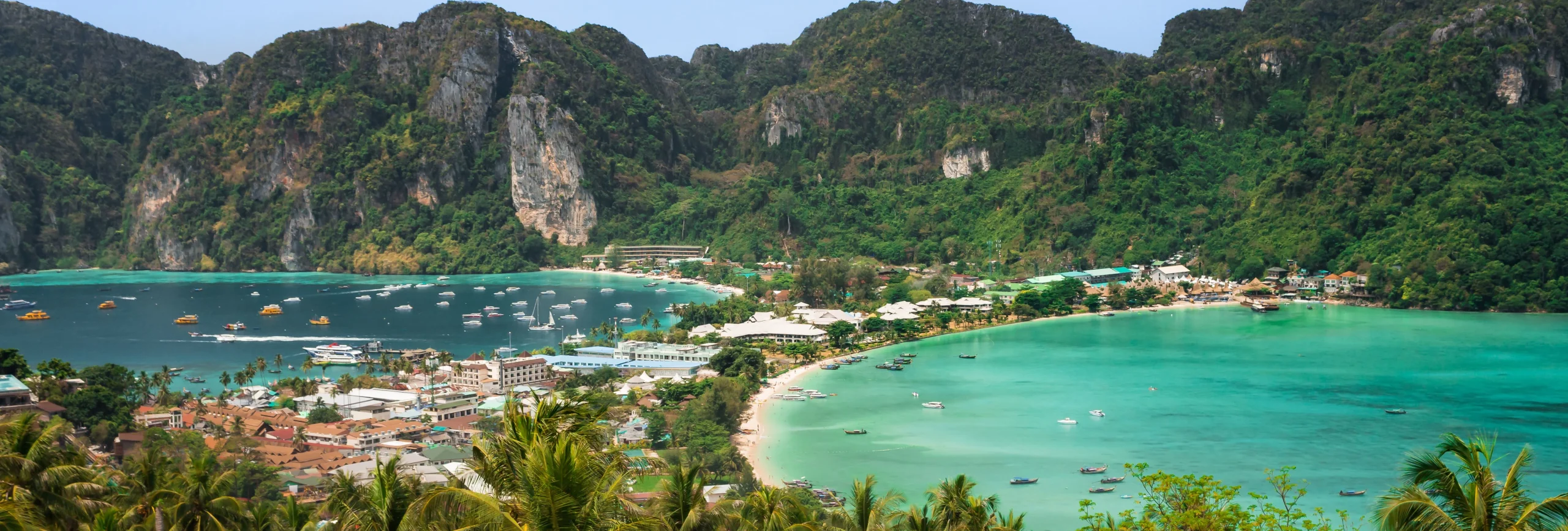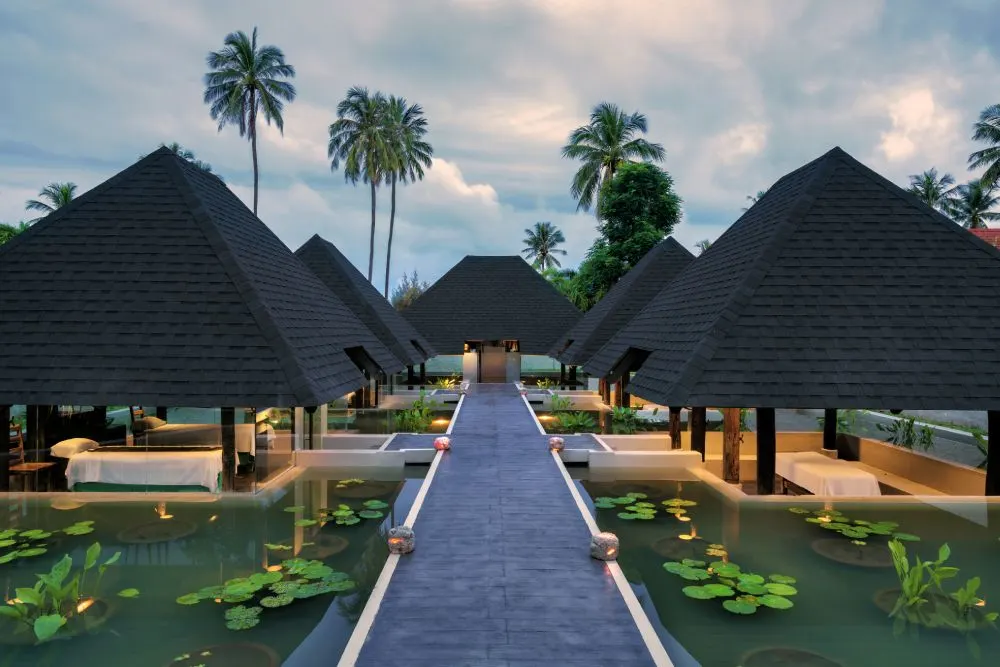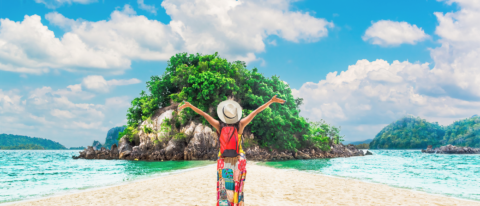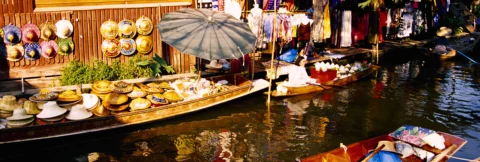Slow Travel in Thailand: Embrace a Relaxed and Meaningful Journey

We’re constantly in a rush, and often, even our vacations become a blur of hurried sightseeing. But what happens when you stop chasing landmarks and start absorbing the rhythm of a place? In Thailand, this shift feels natural.
Known for its bustling cities, sacred temples, and breathtaking landscapes, Thailand also offers a slower, more intentional kind of travel. It’s where mornings begin with market strolls, not alarms; where conversations linger over coffee; and where the journey is just as satisfying as the destination.
Did you know that the coastal city of Rayong is a top choice for those looking to linger longer, with travellers booking some of their longest stays there? Beyond Rayong, Thailand has plenty to offer for a truly unhurried experience. From the laid-back coastal charm of Hua Hin to the serene hills of Pai, slow travel in Thailand allows you to unwind, explore, and appreciate the beauty of each place.
What is Slow Travel, and Why Choose Thailand?
It’s understandable that if you’re visiting Thailand for the first time, you’d want to see and do as much as possible. But even on a shorter holiday, you can still embrace the benefits of slow travel. But what is slow travel, really?
In this kind of journey, less really is more. Fewer checklists, more stories to tell. By staying longer in one place, you notice the details—the way the light hits a temple wall at golden hour, the pulse of a local market, or the friend you make at a café who knows your order by day three. It’s about being a temporary local, not just a quick visitor.
Learning How to Slow Travel (Without Overthinking It)
There’s no single formula for how to do slow travel, and that’s the beauty of it. But if you’re easing into it, here are a few gentle ways to begin:
- Fewer places, longer stays: Instead of racing through several cities in a week, pick one or two and let them unfold at their own pace.
- Walk, cycle, or take local transport: Skip the flights or high-speed transportation. The best discoveries often happen between point A and B.
- Make space in your itinerary: Leave gaps in your day for the spontaneous: a chat with a fruit seller, a detour to a quiet temple, kayaking along tranquil rivers, or lounging on quiet beaches.
- Shop, eat, and linger like a local: Frequent the same cafés. Strike up a conversation with a local shopkeeper. Sign up for a Thai cooking class. Small routines turn strangers into neighbours, and it’s also a great way to practice a few Thai words.
- Immerse in local festivals – Whether it’s joining in the water fights during Songkran Festival (Thai New Year), witnessing the lantern release at Yi Peng Festival (Sky Lantern Festival in Chiang Mai), or being in awe of the rivers illuminated with lotus-shaped baskets during Loy Krathong (Festival of Lights), you’ll make memories that last a lifetime.
In Search of Stillness: A Slow Travel Location Recommendation
Hua Hin
This coastal town is just a few hours from Bangkok. It is all about slow mornings and soft evenings. Wander through night markets, explore the historic Hua Hin railway station, or visit vineyards and national parks, such as the Khao Sam Roi Yot National Park.
Pai
Tucked in the hills north of Chiang Mai, Pai is where paddy fields meet poetry. With waterfalls, hot springs, and local cafés, it’s the kind of place where time melts away. A scooter is all you need to explore its laid-back charm. Consider extending your trip by exploring the Mae Hong Son Loop, where the road winds through forested hills.
Chiang Mai and Chiang Rai
Up in the north, these cultural hubs invite a more reflective kind of travel. Spend days temple-hopping, cycling quiet lanes, or learning traditional crafts. You can also support ethical wildlife sanctuaries like Elephant Nature Park. Chiang Mai is also popular amongst digital nomads, which shows why it’s the perfect place for slow travel.
Koh Yao Noi
Set between Phuket and Krabi, Koh Yao Noi feels like a well-kept secret. Trade crowds for kayaking, village bike rides, rock climbing, or long afternoons by the sea. It’s island life at its most tranquil—perfect for those exploring how to slow travel off the beaten path.
Sukhothai
For those drawn to history, Sukhothai’s ancient ruins are best explored on two wheels. This UNESCO World Heritage Site is less visited than Ayutthaya, which means fewer crowds and more space to reflect.
Koh Mak
This place is all about eco-conscious calm. It’s a quiet escape where doing very little is the main attraction. There are no late-night bars — just local hospitality, clear sea, and quiet beaches.
Ao Nang
Nestled in Krabi, Ao Nang offers “postcard” beaches. Picture soft, powdery sands, as you sit and watch the tides roll in. You can also kayak through mangroves, explore surrounding islands, or visit shopping streets packed with bargains.
7 Days of Slow Travel: Sample Itinerary in Hua Hin
Here’s an itinerary to kickstart your slow travel, focusing on Hua Hin and its charming surroundings:
- Day 1 & 2 (Settle in) – Arrive in Hua Hin and ease into the local scene. Visit the night market, enjoy a seafood dinner, sample the street food, and spend some time by the calming sea.
- Day 3 (Green escapades) – Spend the day exploring Monsoon Valley Vineyard and the landscapes of Khao Sam Roi Yot National Park.
- Day 4 (Slow train) – Hop on a train to a nearby village, where local life continues at its own pace. Join a local cooking class, or try your hand at basket weaving, or just take it all in.
- Day 5 & 6 (Rejuvenate) – Go to a nearby nature retreat. This is your chance to unplug—think spa treatments, yoga, forest walks, and no notifications.
- Day 7 (Farewell, refreshed) – End your trip where you started—on the beach, perhaps, with a coffee in hand and nowhere urgent to be.
From beach days to temple visits, these ideas are easy on both time and your slow travel Thailand budget.
Let’s Take a Peek at Slow Travel Cost in Thailand
Generally, slow travel in Thailand is gentler on your wallet. Staying longer in fewer places often means lower costs. Many of the richest experiences—like wandering a market or chatting with a local—cost nothing at all.
Here’s a rough guide to your slow travel cost in Thailand:
- Accommodation: USD20 – USD100 per night, ranging from cosy guesthouses to mid-range hotels or resorts.
- Food: USD5–USD20 per day when you feast at local markets and eateries.
- Transport: USD10–USD50 per trip for trains, ferries, and buses.
- Activities: USD10–USD30 per day for arts and crafts workshops, national park entries, or cultural tours.
Factors like accommodation choices, transportation preferences and activities will affect your overall slow travel budget.

Experience Slow Travel with Club Wyndham Asia
Whether you’re exploring Thailand’s islands or cultural cities, Club Wyndham Asia.ensures that you have a serene place to return to after a day of discovery. Members can enjoy the best of slow travel without giving up on comfort at Zenmaya Oceanfront Phuket, Wyndham Grand Phuket Kalim Bay, and Club Wyndham Sea Pearl Phuket.




